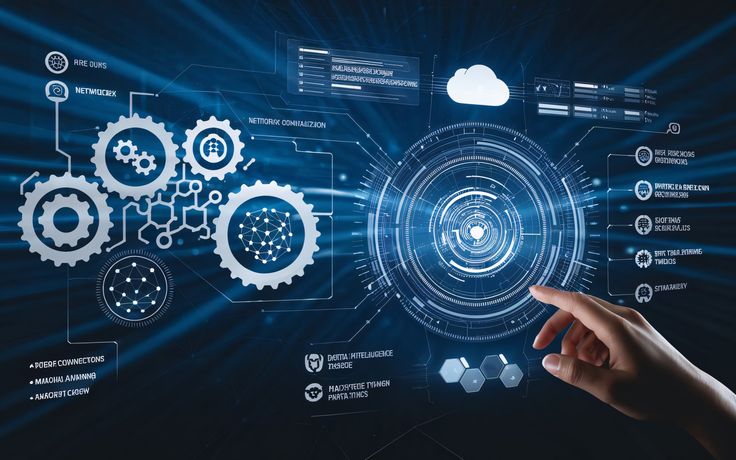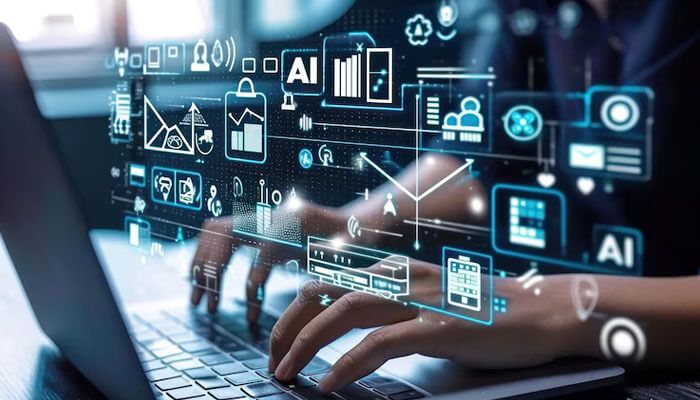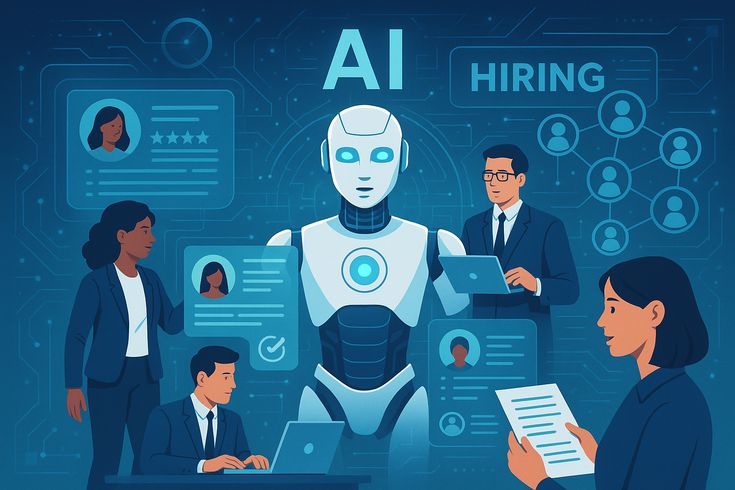1. AI-Driven Anomaly Detection in Industrial Systems

Artificial Intelligence plays a vital role in identifying anomalies within industrial networks and production systems. By continuously monitoring machine performance metrics such as vibration levels, power consumption, and operational temperature, AI algorithms detect deviations that indicate potential cyber threats or equipment failures. These advanced anomaly detection systems rely on machine learning models trained to distinguish between normal and abnormal behavior patterns. When irregularities are identified, alerts are triggered for preventive action before major disruptions occur. This proactive approach safeguards industrial processes, minimizes downtime, and ensures consistent productivity. As manufacturing environments become more connected through IoT and cloud computing, AI-driven anomaly detection becomes essential in maintaining operational stability and protecting valuable industrial data assets from emerging digital threats.
2. Cybersecurity Reinforcement through Predictive AI Monitoring
AI-based cybersecurity systems strengthen industrial defense mechanisms by predicting and preventing cyberattacks before they occur. Using behavioral analytics and neural network-based threat modeling, AI systems recognize suspicious activity within networks, such as unauthorized access attempts or abnormal data transfer rates. Unlike traditional security protocols that react after a breach, AI enables predictive defense by analyzing massive datasets in real time. This anticipatory capability is critical for safeguarding interconnected factories, smart grids, and automated systems from ransomware, phishing, and system hijacking. The integration of AI into cybersecurity ensures that organizations can maintain continuous production while minimizing vulnerability, making it a cornerstone of modern industrial resilience.
Thank you for reading this post, don't forget to subscribe!3. Real-Time System Behavior Analysis
In industrial automation, real-time behavior monitoring is crucial for operational integrity. AI algorithms process continuous data streams from sensors embedded in machinery, evaluating speed, torque, and load dynamics. This instant analysis allows the system to detect inefficiencies, unsafe operations, or signs of mechanical wear. With AI’s rapid computation power, real-time behavioral analytics enhances decision-making, helping operators optimize processes and prevent malfunctions. For instance, in chemical plants or automotive production lines, even minor irregularities can be detected and corrected instantly, preventing larger system failures. Thus, AI-driven real-time monitoring ensures both performance optimization and industrial safety.
4. AI for Proactive Threat Prevention
AI elevates security by enabling proactive, rather than reactive, threat management. By learning from previous attack data and simulating potential intrusion scenarios, AI systems can forecast vulnerabilities within industrial networks. This forward-looking approach allows maintenance teams to strengthen defenses and patch system weaknesses before exploitation. AI’s capacity for pattern recognition and anomaly detection makes it uniquely capable of identifying evolving cyberattack strategies. In industries dependent on uninterrupted workflows, such as manufacturing and logistics, proactive threat prevention driven by AI ensures operational continuity, data integrity, and overall reliability.
5. Integration of Digital Twin Technology
Digital twins represent one of the most transformative applications of AI in industrial technology. These virtual replicas of physical machines mirror real-time operations, enabling engineers to analyze performance and simulate potential failures. By using AI algorithms, digital twins learn from continuous data input, allowing predictive insights into component wear, environmental stress, and efficiency optimization. Engineers can test design modifications virtually before implementing them physically, drastically reducing cost and risk. The result is a smarter, faster, and more efficient innovation cycle, where physical prototypes are replaced by data-driven simulations, leading to greater precision and scalability in manufacturing.
6. Predictive Maintenance through AI Simulation

Predictive maintenance, powered by AI and digital twin models, transforms how industries handle equipment servicing. Instead of relying on fixed maintenance schedules, AI predicts the exact time a component is likely to fail, allowing timely intervention. Using data from sensors and historical performance records, machine learning algorithms assess degradation rates and operating stress. This predictive capability not only prevents unplanned breakdowns but also extends equipment lifespan, optimizes resource allocation, and lowers maintenance costs. Industries such as aviation, energy, and automotive manufacturing benefit enormously from this proactive maintenance approach, improving reliability and productivity.
7. Enhancing Design and Innovation with AI Models
AI-based design optimization accelerates the innovation cycle by simulating and testing multiple prototypes virtually. Through machine learning, engineers analyze vast datasets to determine the best material properties, design geometries, and performance configurations. Digital twin integration allows AI to identify inefficiencies in design long before production begins. This minimizes waste and accelerates product development timelines. As a result, AI empowers industries to innovate faster, experiment safely, and deliver high-quality products optimized for performance, cost, and durability.
8. Self-Healing AI Systems for Continuous Operations
Self-healing AI systems represent a major leap in reliability and resilience. These systems continuously monitor themselves, detect faults, and automatically repair or reconfigure processes without human involvement. They use deep learning models to diagnose the root cause of failures and initiate corrective actions such as resetting modules, rerouting data, or activating backup systems. This level of autonomy ensures continuous operations, even under complex fault conditions. In sectors like cloud computing, aerospace, or autonomous manufacturing, self-healing AI minimizes downtime, reduces maintenance dependency, and increases overall operational efficiency.
9. Autonomous Diagnostics and Recovery
AI’s diagnostic capabilities allow systems to not only detect issues but also understand their underlying causes. When combined with self-repair protocols, AI can restore optimal functioning automatically. For example, in autonomous vehicles or industrial robots, AI can detect sensor malfunctions and adjust algorithms in real time to maintain performance. This autonomous diagnostic ability ensures that modern machines maintain operational integrity even in unpredictable environments. It reduces manual intervention, lowers operational risk, and ensures continuous productivity across interconnected systems.
10. Enhancing Safety in Industrial Operations
AI-driven monitoring and self-healing mechanisms significantly enhance industrial safety. By continuously analyzing data from machines, AI detects potential hazards like overheating, high vibration, or pressure surges before they escalate into accidents. When integrated with IoT and digital twin models, AI can predict unsafe conditions and initiate preventive shutdowns or rerouting mechanisms. This not only protects valuable machinery but also safeguards human workers from hazardous incidents. Hence, AI’s contribution extends beyond efficiency — it establishes a foundation for safer, smarter, and more resilient industrial operations.
11. Smart Supply Chain Coordination
AI improves supply chain management by integrating predictive analytics and automation into logistics processes. Machine learning algorithms analyze factors such as demand fluctuations, production cycles, and transportation delays to optimize scheduling and inventory control. By coordinating data across manufacturing units, AI ensures smooth machine-to-machine communication, preventing production bottlenecks. This real-time adaptability reduces lead times, minimizes storage costs, and enhances delivery accuracy. The result is a supply chain that’s not only efficient but also resilient to disruptions, ensuring seamless manufacturing operations.
12. Predictive Logistics Optimization
Beyond coordination, AI introduces predictive capabilities into logistics by forecasting material needs, traffic conditions, and delivery times. AI-driven route optimization algorithms reduce transportation delays and improve fuel efficiency. In large-scale industrial operations, predictive logistics ensures that raw materials and finished products are available exactly when needed. This synergy between AI and logistics increases supply chain transparency, operational agility, and profitability while supporting sustainability goals by minimizing waste and emissions.
13. Integrated Machine Communication Networks

AI facilitates intelligent interconnectivity among machines through industrial IoT and autonomous communication frameworks. Machines share operational data and coordinate tasks without human input, ensuring synchronized workflows. For example, in a smart manufacturing environment, AI algorithms enable robotic units, conveyors, and sensors to communicate instantly, optimizing production flow. This interconnected network reduces downtime, improves quality assurance, and increases throughput. AI’s communication intelligence thus lays the foundation for Industry 4.0, where machines operate as a cohesive, self-regulating ecosystem.
14. AI for Resource Allocation and Efficiency
AI enhances industrial efficiency through intelligent resource allocation. Using real-time data analytics, AI determines the optimal distribution of labor, machinery, and materials. It balances workloads, minimizes idle times, and optimizes energy consumption. For example, AI can dynamically adjust machine operating speeds based on production demands. This intelligent management leads to cost savings, higher output, and reduced environmental impact. As industries move toward sustainability, AI’s resource optimization capabilities are becoming indispensable.
15. Building Resilient Industrial Infrastructure
AI-driven systems contribute to developing more resilient industrial infrastructures by combining predictive analytics, self-healing mechanisms, and cybersecurity frameworks. These systems can absorb shocks, recover from disruptions, and continue functioning under adverse conditions. Whether it’s responding to cyber threats, mechanical failures, or supply disruptions, AI ensures consistent performance. This resilience enhances industrial competitiveness, enabling companies to adapt to technological and economic fluctuations without compromising output quality or safety.
16. Advancing Towards Smarter, Flexible Manufacturing

The integration of AI across industrial operations creates smarter, more adaptive production systems. Machines learn from data, adjust parameters autonomously, and optimize workflows to meet shifting market demands. From flexible assembly lines to personalized manufacturing, AI-driven intelligence transforms rigidity into responsiveness. The outcome is a new era of smart factories — agile, efficient, and innovation-focused — where quality, safety, and productivity are continuously elevated through machine intelligence.




